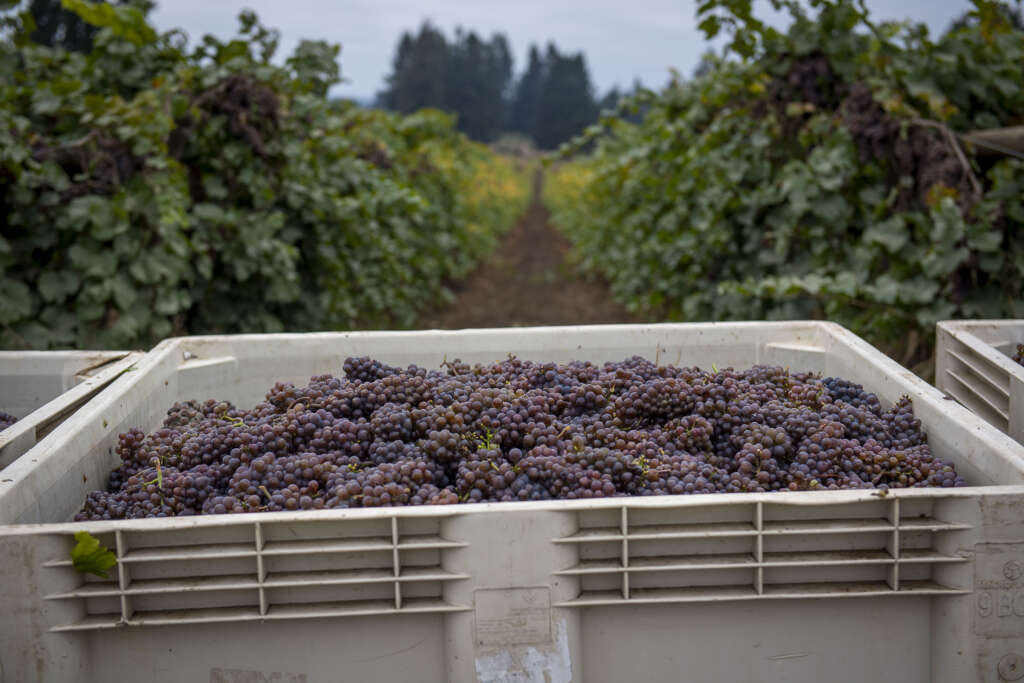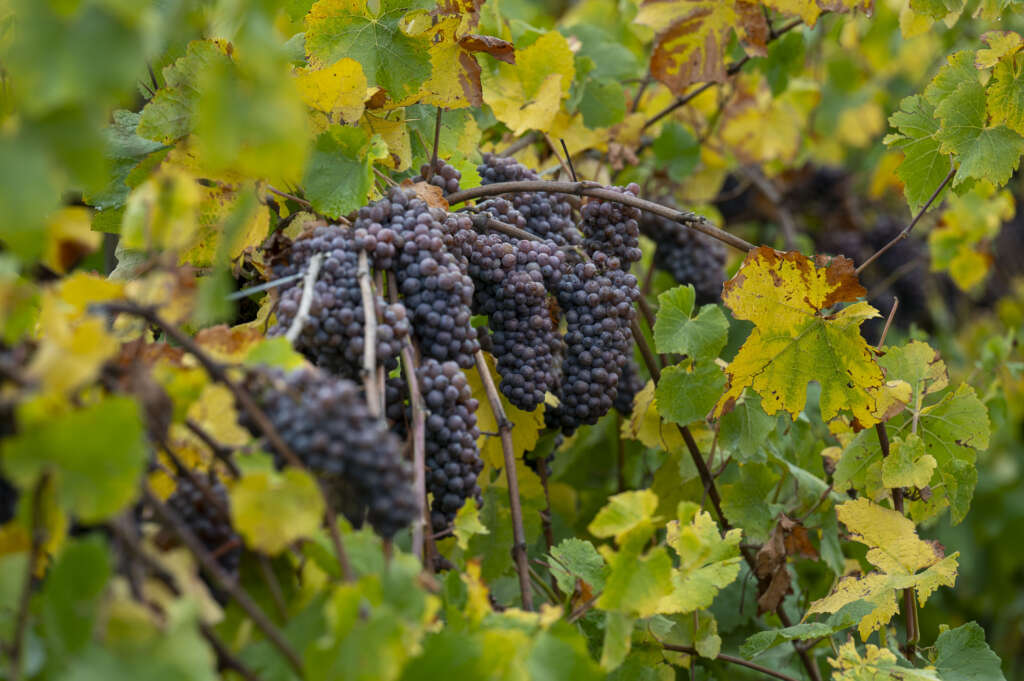It’s no secret that we are big fans of Pinot Gris here at King Estate. In fact, King Estate has been credited with putting the grape on the map in the U.S., helping to showcase Oregon’s ideal climate for growing “the other” Pinot. In 1994, when King Estate was just three years old, a story published in The New York Times foreshadowed what was in store, noting, “(King) estate, at which 100 acres of pinot gris are being planted, will be the largest grower of the grape in the nation.” Today that acreage stands at around 300 acres and King Estate is one of the nation’s leading producers of Pinot Gris. It is the second most planted grape in Oregon, after Pinot Noir, and is the most successful white wine from Oregon, “by far,” according to King Estate Co-Founder and Co-CEO Ed King.

Gris or Grigio?
Before diving into the glass further, let’s settle something once and for all: Is it Pinot Gris or Pinot Grigio? The difference is linguistic – Gris is French, Grigio is Italian. “Gris” means gray in French, which describes the color of the grape skins later in the growing season. In any language, the grape is essentially the same. (It’s also called Tokay, Grauer Burgunder, Ruländer, Rulandské sede, Sivi pinot, Fromenteau Gris, and we’re just getting started.) We like how noted wine writer Dan Berger summed it up in a recent piece posted on the Napa Valley Features website: “Called pinot grigio in Italy’s Veneto, it can be a simple, decent quaff; in France’s Alsace it is nobler.” Pinot Gris is indeed one of the four noble grapes of Alsace, as designated by the French government, along with Riesling, Muscat and Gewürztraminer. King Estate Pinot Gris hews more closely to the Alsatian style than Italian, which is simpler and lighter.

Pinot Gris is thought to have originated in France as a mutation of Pinot Noir, before spreading to northern Italy and other parts of Europe and beyond. Today Pinot Gris can be found in virtually every wine region on the planet, but the grape thrives in cool climates like that of Alsace and Oregon’s Willamette Valley, where “the grape has been elevated to regal status,” Berger says. So while Gris and Grigio are basically the same grape, their growing conditions – primarily climate and soil – and winemaking methods are very different. Hence the wines are quite different, too.
Pinot Gris Oregon and King Estate Style
In his 1994 New York Times article on Oregon Pinot Gris, Howard Goldberg wrote, “Many people are familiar with inexpensive Italian pinot grigio, made from the same grape, but some Oregon versions tend to be more interesting.” Back then, noted wine writers Jeff Prather and Paul Gregutt called Pinot Gris “the rising star of Oregon, the only state producing any quantity of this wonderfully fruity yet dry wine.” Readily acknowledging our bias, we nonetheless would stake our reputation on the claim that Oregon Pinot Gris is second to none.

“There is a distinctive Oregon Pinot Gris style,” Ed King says. “Before we turned to cold fermentation in stainless steel, we experimented with making Pinot Gris like Chardonnay was being made in California, with substantial oak exposure, and that wasn’t successful.” Pinot Gris in Oregon is fruit and acid driven, opening with fruit-forward aromas of citrus and topical fruits. Layers of flavors fill the mouth with beautiful notes of peach and pear, tropical fruit and spice. The result is a fresh, bright wine that pairs well with chicken, seafood or light hors d’oeuvres.
To get some King Estate Pinot Gris for yourself, visit our website. And to read more of Dan Berger’s take on Pinot Gris, including his surprise to discover how well the wine ages (something Ed King has long maintained), visit Napa Valley Features here. Here’s an excerpt: “Pinot gris does age. Well, not all of them. In fact, probably only a few. If the wine comes from a cool climate, if its acid is relatively high, if its pH is relatively low and if the storage conditions are near-perfect, I concluded, the potential is there for pinot gris to become absolutely superb when it is a decade or more old.”
We couldn’t a-gris more.
